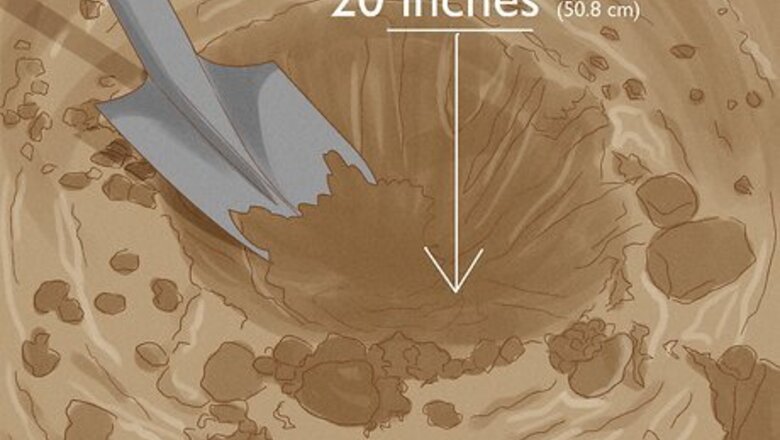
views
Planting Mahogany Saplings
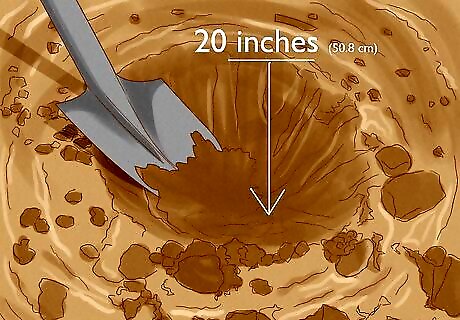
Dig a deep hole. Using a shovel, dig a hole that is at least 20 inches (50.8 cm) deep or as deep as the container presently holding the sapling. Between these two options, choose the depth that is deeper. The width of the hole should be twice as long as the diameter of the sapling root system.
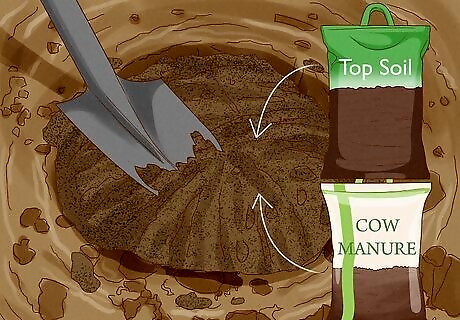
Mix organic material into the hole. Add composted cow manure and topsoil to the hole, mixing it into the soil at the bottom and sides of the hole with a shovel or garden fork. Note that organic peat moss can be used instead of topsoil, if desired. If desired, you can skip the soil amendments altogether. Doing so can make it more difficult for the tree to establish itself, but if you wish to add fertilizer to the area after planting the tree, there shouldn't be a problem.
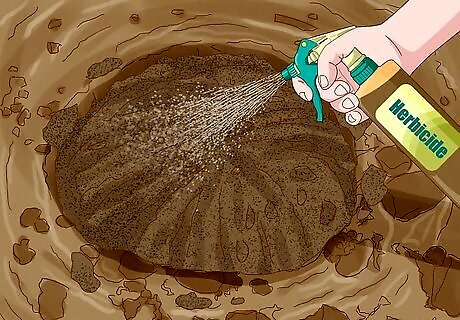
Apply an herbicide. Spray the amended planting hole with a preventative "knock down" herbicide. Doing so is not strictly necessary, but it can help keep the growing area free from weeds for two years or so of growth, giving the tree enough time to establish itself in the process. Application amount can vary depending on the type of herbicide used, so follow the instructions on the label carefully.
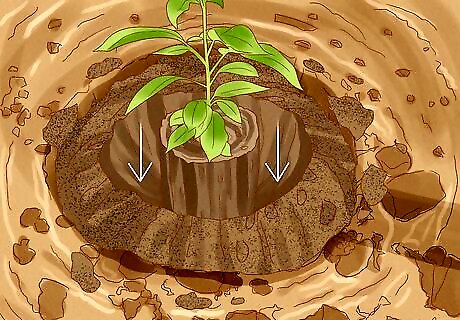
Place the sapling in the planting hole. Free the sapling from its current container and place it directly into the center of the prepared planting hole. If the sapling is in a traditional nursery container, carefully tip the container on its side and grab the tree at its base. Carefully wriggle the tree back and forth until it eases out of the container. Do not disturb the roots after removing the sapling. Stand the sapling upright in the center of the planting hole. The roots should be completely beneath the soil line.
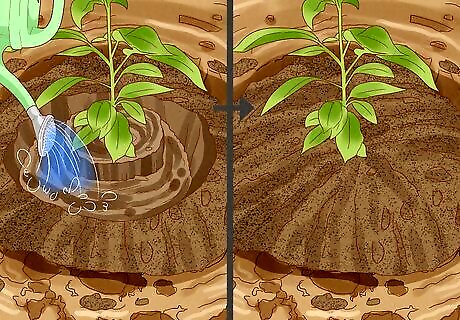
Settle the soil. Fill the remainder of the hole with soil and water well to help pack the soil in. For best results, fill half of the hole with soil, then thoroughly water this soil before proceeding. After the water appears to drain, fill the remainder of the hole with additional soil and water again.
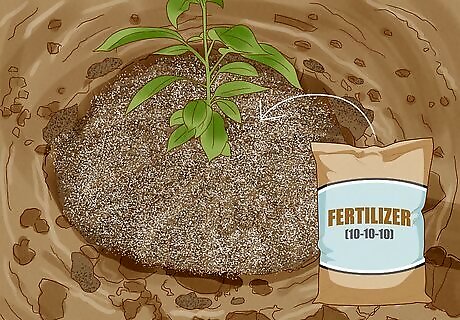
Consider fertilizing the tree. To give the tree another boost and help the sapling establish itself, consider applying a balanced fertilizer containing equal parts nitrogen, phosphorus, and potassium. These fertilizers will usually be labeled as 10-10-10, 30-30-30, or something similar. Apply 0.22 to 0.44 lb (100 to 200 g) of fertilizer per tree. You should apply the fertilizer in small pockets of soil around the perimeter of the tree. Do not spread it into the planting hole or along the surface of the ground. Surface fertilization can result in weed growth. Note that fertilization may not be needed if you mixed organic material into the planting hole prior to planting the sapling.
Caring for Mahogany Trees
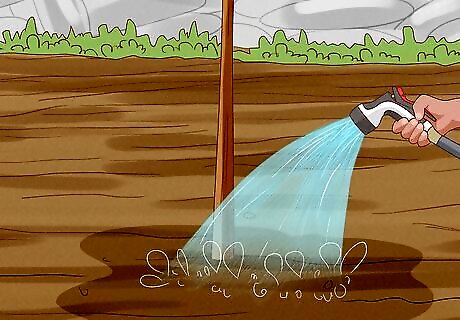
Water regularly. Use a garden hose to water the soil around the tree once a week, applying just enough water to create visible moisture on the surface of the soil. During rainy seasons, additional waterings may not be needed. On the other hand, during abnormal droughts, you may need to increase your watering schedule from once to twice a week. Regardless of how the weather is, the idea is simply to keep the soil regularly moist. Consistent sources of water are especially important while mahogany trees are young and have not yet established themselves. Fully mature trees can tolerate some drought without dying, but dry spells may cause the tree to drop its leaves early for the season.
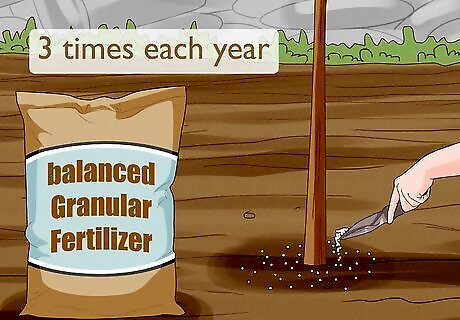
Fertilize three times each year. Feed the tree with a dose of fertilizer in the spring, summer, and fall. Use a balanced granular fertilizer for best results. The same type of fertilizer used at the time of planting can be used for yearly maintenance. The fertilizer should contain equal parts nitrogen, phosphorus, and potassium. Follow the dosage instructions provided on the label of the fertilizer used. For best results, mix the fertilizer into the soil around the tree instead of spreading it over the surface of the soil.
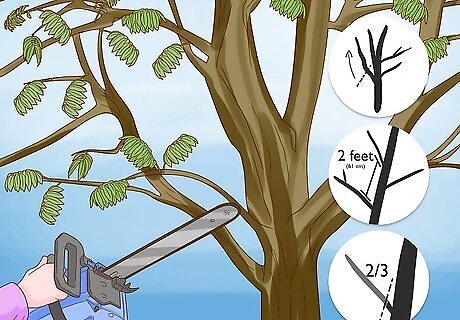
Prune young mahogany trees. During the first two to eight years of the tree's life, yearly pruning can help control the height and spread of the tree. Check the arrangement and space between limbs. The healthiest mahogany trees will have several evenly spaced major limbs that spread out along one central trunk or central leader. As the tree grows, these limbs will be at least 2 feet (61 cm) apart from one another, if not further. Prune away any upright leaders aside from the central trunk. These upward growing branches can make it more difficult for the tree to tolerate strong winds and storms, thereby weakening it. Cut away any branches that grow larger than two-thirds of the diameter of the central trunk. Such limbs can put stress on the tree and shorten its lifespan.
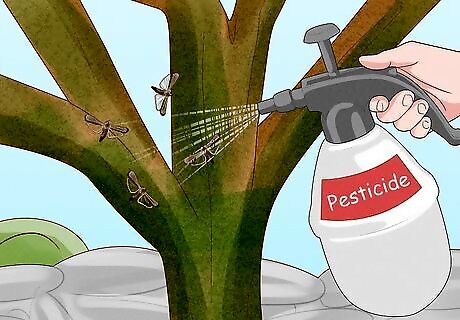
Watch out for pests. There are a few common pests that may present a problem to the health and longevity of your tree. When you spot such pests, apply an appropriate pesticide to the area. Some of the biggest problems come from shoot borers, longhorn beetles, powder post beetles, tent caterpillars, tip moths, scale, leaf notchers, leaf miners, Cuban leaf beetles, mahogany webworms, and Sri Lanka weevils. Among these insect pests, borers present the greatest threat to the health and longevity of the tree. When borers are present, pesticides should be applied. The other pests mostly cause aesthetic damage to the tree and don't often cause structural damage. As a result, pesticide application is not as crucial when these pests are spotted. You can treat the tree or choose not to do so. When selecting a pesticide, look for one specifically labeled to work against the type of pest you are trying to kill. Do not assume that all pesticides will work on all pests.
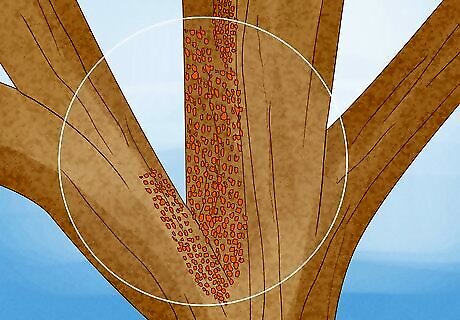
Monitor the tree for signs of infection. While diseases rarely strike mahogany trees, nectria infection can develop when the tree becomes stressed or injured. Look for discolored bark along the branches of the tree, particularly where the branch meets the trunk. As the fungal disease progresses, the discoloration can turn into small cream-colored to reddish cankers that develop on the surface of the bark. These bumps will continue to grow and can eventually kill entire branches or trees. The best way to save a mahogany tree facing nectria infection is to remove the infected wood. You may also apply a fungicide to the tree, but fungicides do not always work on this particular type of infection.
Preparing the Area
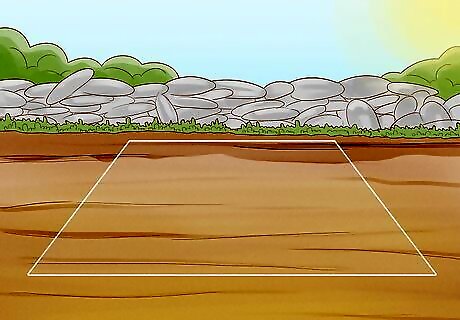
Look for a sunny spot. Mahogany trees do best when planted in areas that receive partial to full sun. Avoid heavily shaded areas. Also note that these trees are considered tropical varieties and thrive best in warm climates. Harsh winters can easily damage or destroy mahogany trees. Think twice about planting a mahogany tree if your winters reach below temperatures of 40 degrees Fahrenheit (4.4 degrees Celsius).
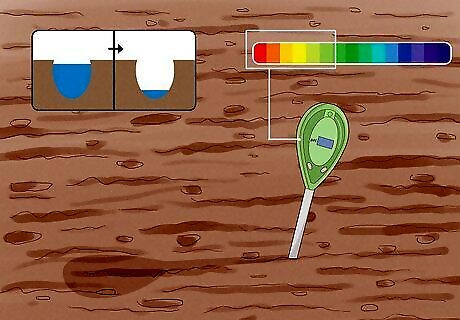
Check the soil. Mahogany trees can grow in a range of soil types, but they do thrive best in well-drained sandy loam soils. Avoid heavy clay soils and duplex soils. Additionally, mahogany trees do best in neutral soils. They can survive in strongly acidic soils, too, but avoid planting them in alkaline soils. If you need to use naturally alkaline soil, amend it with sphagnum peat, ammonium nitrate fertilizer, sulfur-coated urea, or agricultural sulfur. Most mahogany trees are resistant to salt spray, so soils frequently drenched by salt water mist should not present a problem. Since mahogany trees have deep root systems, you should make sure that the soil you plant it in runs deep, too.
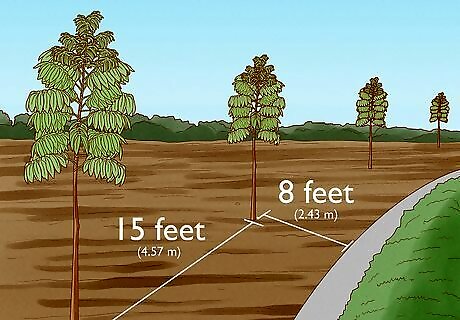
Give the tree plenty of space. Plant the tree at least 15 feet (4.57 m) away from any house or large structure. It should also be 8 feet (2.43 m) or more away from sidewalks, streets, and driveways. Mahogany trees tend to have large canopies and long roots, which is why appropriate spacing is so crucial. Similarly, it is best to plant multiple mahogany trees at least 15 feet (4.57 m) apart. You should be able to plant grasses, flowers, and small shrubs near the base of the tree without much problem, however.


















Comments
0 comment